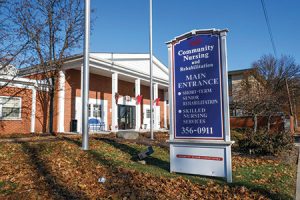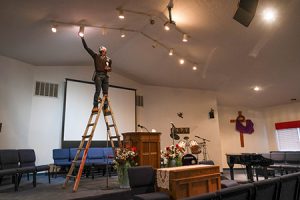
2018 Year in Review: Flurry of health care construction ramps up
The projects range from full-service hospitals in Bloomington, Brownsburg and Shelbyville to a flurry of “micro-hospitals,” free-standing emergency rooms and urgent care centers.

The projects range from full-service hospitals in Bloomington, Brownsburg and Shelbyville to a flurry of “micro-hospitals,” free-standing emergency rooms and urgent care centers.
Starting Jan. 1, every U.S. hospital will be required to post standard charges online for every item and service they provide, from bandages and drugs to operating rooms and organ transplants.
Gosling has sold about 700,000 sticks since creating the product in his kitchen in 2004.

Rogers’ path to building the nation’s largest electric utility began in 1988, when he took over struggling PSI Energy in Indiana.
The Indianapolis drugmaker said its 2-year-old anti-inflammatory medicine showed superiority in a head-to-head trial against Humira, the world’s best-selling drug, for treating psoriatic arthritis.

The penalties will be as much as 2 percent of Medicare reimbursements, and could be worth millions of dollars to large nursing-home chains with locations spread across Indiana and the nation.

The health system said the 15-year-old elevated train service needs major maintenance, but did not say whether the system would ever return to service.

David Johnson, who has led the life science advocacy and investment group for 14 years, will take over full-time leadership of the Central Indiana Corporate Partnership in 2019.

Entrepreneur Michael Arnolt teamed with an inventor more than 20 years ago to launch an enterprise that has sold thousands of steel therapy instruments and trained thousands of clinicians.
The company is planning to add up to 1,330 jobs over the next eight years, focused mainly on its Regentec division in Indianapolis and its Profile Park in Bloomington, site of a former GE refrigerator factory.
Solinftec said Thursday it would invest $50.6 million to establish operations in the Hoosier state. The company makes technology that helps farmers collect and analyze data to increase crop returns.
At issue in the five-year legal dispute was whether Dr. Rick Sasso was properly compensated for various inventions, and whether Minnesota-based Medtronic paid him sufficient royalties as spelled out in their agreements.

It’s the foundation’s first capital campaign since 2010, when it raised $200 million. The money will be used for pediatric research, patient care, maternity and newborn health, and family support programs.
Dr. John Williams, dean since 2010, is stepping down next summer after turning 67, in accordance with university policy. He helped raise more than $70 million and expanded the school’s clinical space by about one-third.

The crisis has been years in the making, and the job of wrestling it to the ground has grown into a massive task. No one is yet predicting when the state will be able to declare victory.
The project will give the Indianapolis-based pharmaceutical company upgraded lab space as it pushes to launch more drugs for diabetes, cancer, pain and other ailments.

Indiana, one of the largest per-capita energy consumers in the nation, ranks 40th among states for energy efficiency, according to the American Council for an Energy-Efficient Economy.
The society, which has lost more than half its membership in the past two decades, is looking for a new home for many historical items, including a 1910 Waltham Gothic revival grandfather hall clock, a painting by Hoosier artist T.C. Steele and historic medical treatment books and documents.
The researchers are testing the effectiveness of a small, targeted molecule to prevent or reverse chemotherapy-induced peripheral neuropathy—a nerve problem that causes pain, numbness and tingling.
Executives and directors of the West Lafayette-based biotech hold nearly 9 percent of Endocyte stock, worth about $177 million, based on the deal price of $24 a share.